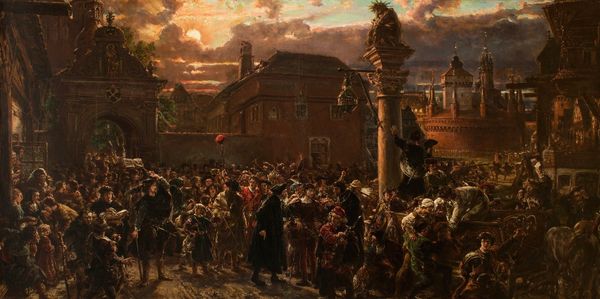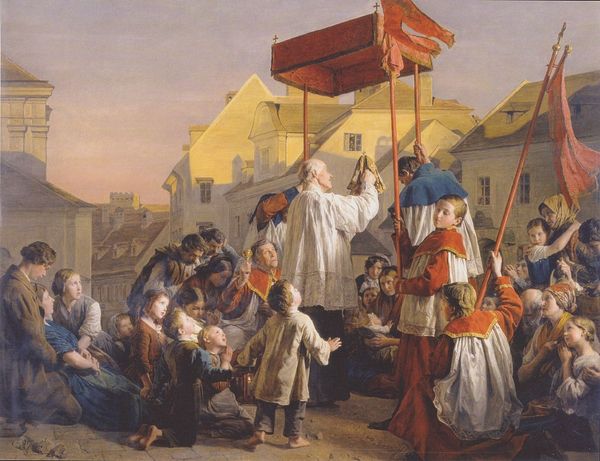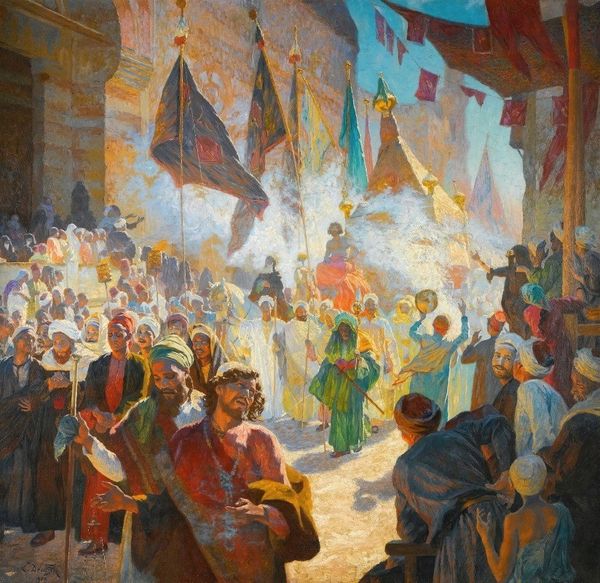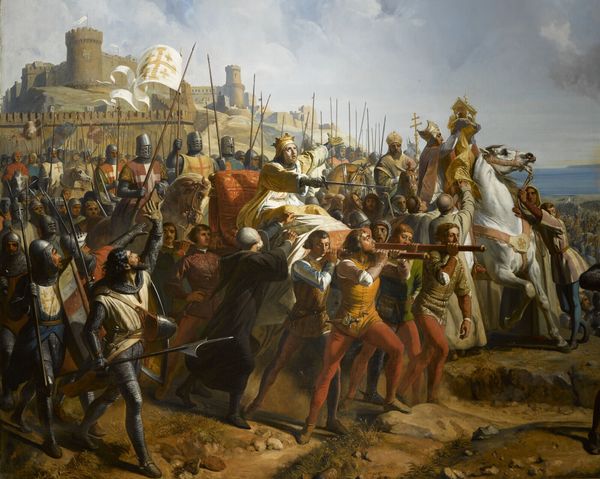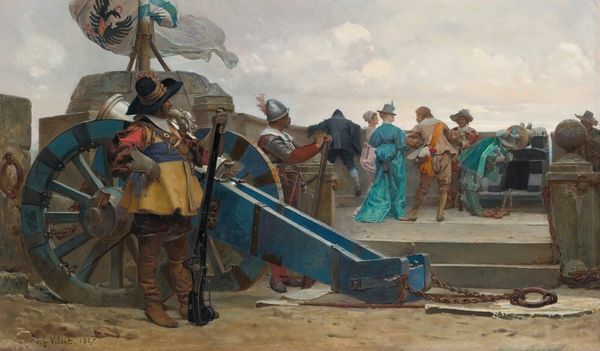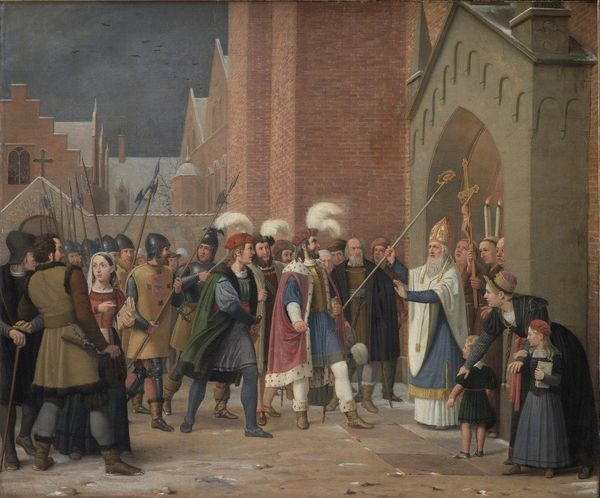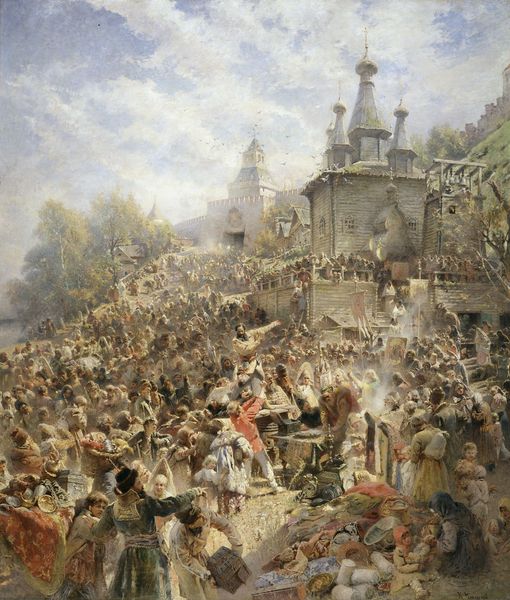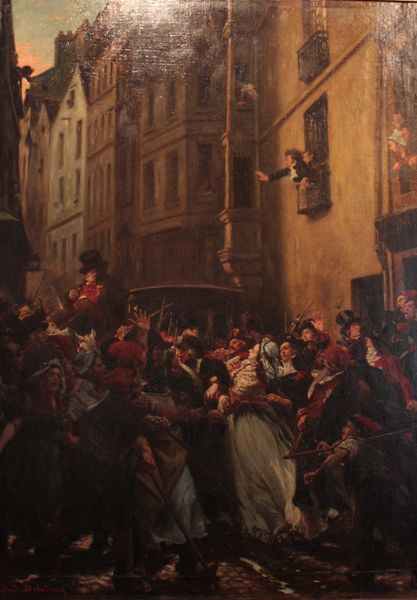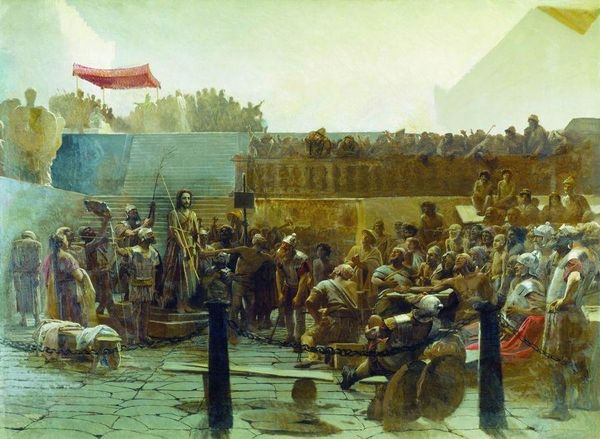
painting, oil-paint
#
portrait
#
painting
#
oil-paint
#
painted
#
oil painting
#
russian-avant-garde
#
genre-painting
#
history-painting
#
realism
Copyright: Public domain
Curator: What a bustling scene! So many figures depicted in this painting; it immediately creates a feeling of intense activity. Editor: Indeed! This is Vasily Vereshchagin’s 1891 oil on canvas titled, “Osada Troitse-Sergievoy Lavry,” which translates to “The Siege of the Trinity Lavra of St. Sergius.” Curator: Looking at this from the standpoint of historical power structures, what story is Vereshchagin attempting to narrate? Editor: It's an image deeply entrenched in Russian Orthodox history. He's portraying the historical siege of the Trinity Lavra, a significant monastery, during the Time of Troubles, early in the 17th century. We can observe not only the solemn religious procession entering from the left, with its somber hues, but also what appears to be an uprising toward the right. Curator: I am drawn to the women depicted. They are located on the periphery of the scene, which feels quite telling in relation to gender and agency. Are these merely bystanders, or are they participating in the resistance in unseen ways? Editor: That’s a salient point to address. Historically, the monastery withstood a long siege thanks to the collective resilience of its people, including women and children. They helped in defense and provided support. It really invites us to consider what it meant to protect religious and cultural identity during periods of political upheaval. This was deeply tied to national survival at the time. Curator: The figures, rendered with almost photographic precision, create an immediate connection with the past. I’m really stuck on the modern understanding and politicization of conflicts surrounding cultural preservation. Vereshchagin forces viewers to confront the complexities surrounding who benefits when history becomes propaganda. Editor: That makes me reflect on the public role that artworks like this played during its time and how it has evolved since then. When we explore such complex visual and historical accounts, the opportunity for diverse viewpoints on its ongoing legacy is vast.
Comments
No comments
Be the first to comment and join the conversation on the ultimate creative platform.

